What will students learn?
GCSE Combined Science
We start in Y10 teaching lessons exploring key scientific language (variables and command words), interpreting graphs, how to answer extended response questions, mathematics in science and practical investigations. This disciplinary knowledge is threaded wherever possible to provide students plenty of practice. This is to support their development of different forms of working scientifically, pattern seeking and the importance of evidence and accuracy. By teaching Physics: Particle model of matter first allows students to explain a wide range of observations and has many applications in everyday life looking at changing states and how energy is transferred. The particle model will then link to atoms, elements, mixture and compounds in Chemistry. This sequencing allows students to revisit what they had previously learnt at KS3 and forms a basis to explicitly link this topic to Chemistry and Biology.
Extra-curricular science learning is always connected to real-world applications of science.
- STEM Academy across Mulberry Schools trust (sponsored by Mercedes Formula 1)
- Signposting to relevant experiences, lectures and summer programmes
- Extended project qualification
- Science conferences
- Access programmes such as The Sutton Trust
- UCL medical programme
- KCL outreach programmes
- Nuffield research placements
- Use of the hospital ward to practice etiquette, skills and interpersonal skills
How do we assess students and help them to improve?
All students sit baseline assessments to check prior knowledge and to support the flexible approach we take when teaching specific concepts and how long we spend teaching them. Time is allocated for students to embed what they have learned in long term memory through extensive practice before moving onto new content. Through regular assessments we move forward according to how secure students’ knowledge is.
Our science curriculum takes into consideration shared language which may have different interpretations in Maths and Sciences. This avoids misconceptions e.g. the line of best fit. Knowledge is built on from students’ prior knowledge so pupils’ misconceptions are less likely. These are then explicitly addressed within lessons.
. In all assessments students are tested on new content, previous content, mathematical skills, practical investigations and application. Through regular assessments we move forward according to how secure students’ knowledge is. This cycle of assessment and feedback work students towards being confident expert learners.
In the department we assess using baseline assessments, practice exam questions, end of topic cumulative assessments and mock assessments. Students are provided with live feedback in lessons, after assessments and written feedback for their coursework.
How will we ensure that the needs of SEND learners and high achieving learners are met?
In our science curriculum all students regardless of SEN/PP are expected to meet all lesson outcomes and be successful on their courses. Staff adapt their teaching practice, where needed to support students in achieving ambitious goals. All staff read and apply strategies in students IEPs to support quality first teaching. Teachers undertake regular data analysis to check progress of students which is then fed into lesson planning, creating resources, scaffolding and intervention. We provide a fully inclusive, engaging learning environment where all students are suitably supported and challenged. Checking for understanding occurs seamlessly throughout every learning experience and responses inform teachers, allowing them to respond effectively to the needs of the class and individuals through adapting pace and challenge, addressing gaps and misconceptions.










